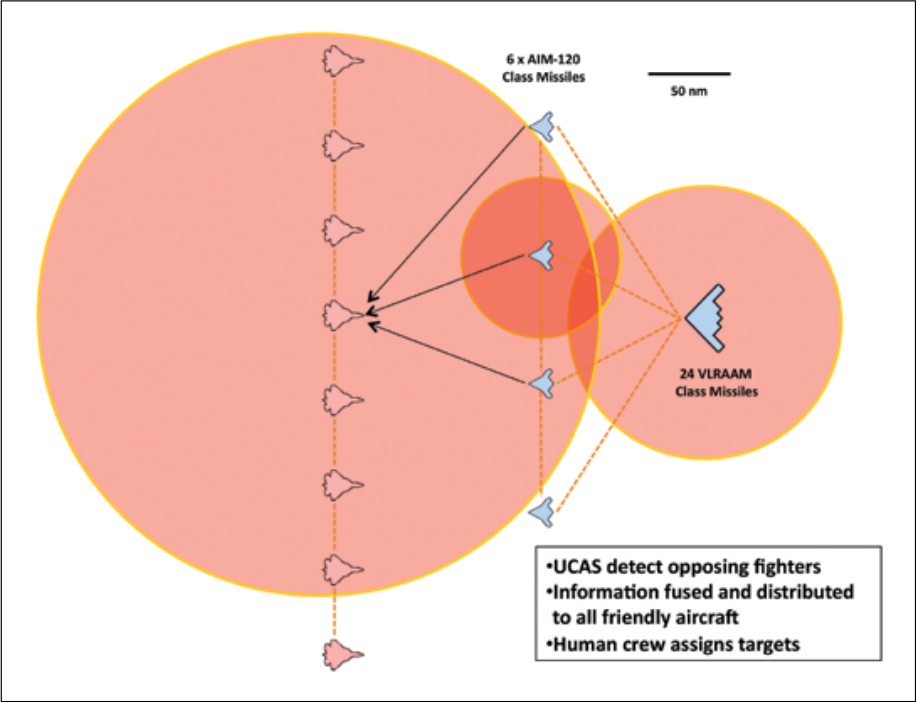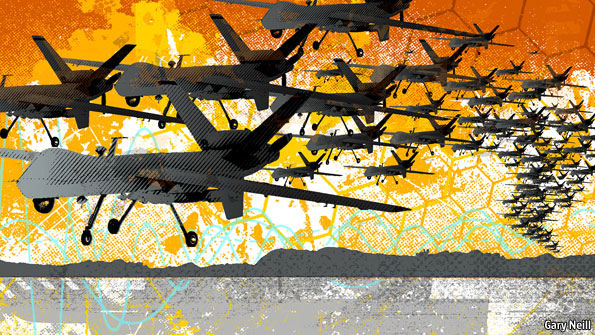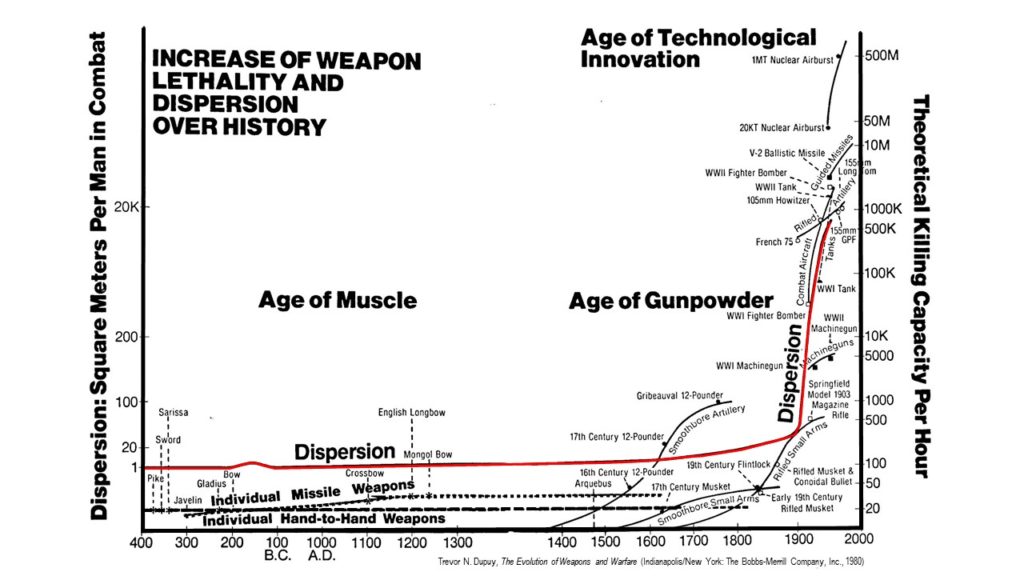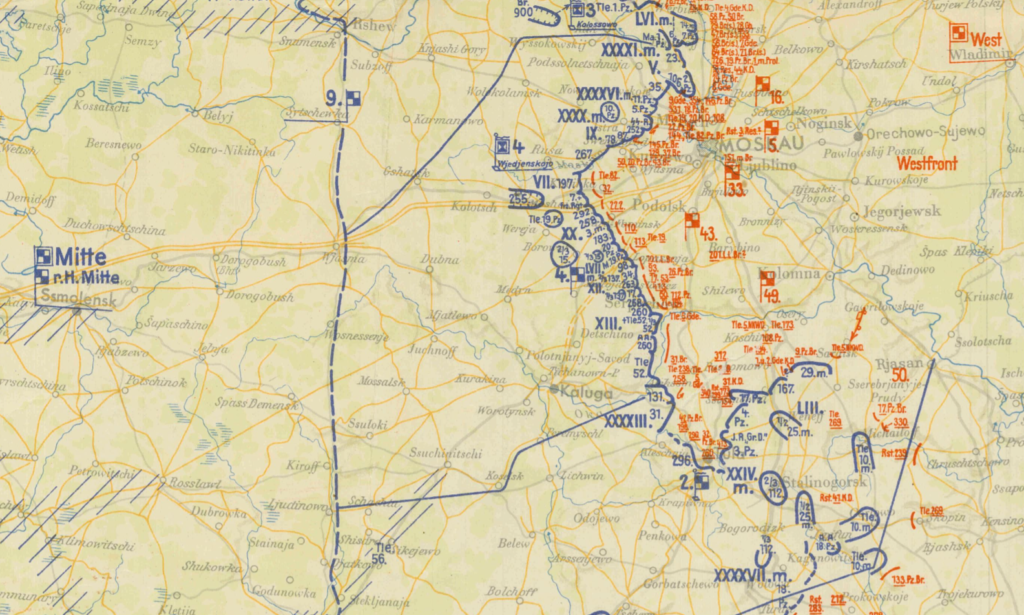
My previous post outlined the potential advantages and limitations of current and future drone technology. The real utility of drones in future warfare may lie in a tactic that is both quite old and new, swarming. “‘This [drone swarm concept] goes all the way back to the tactics of Attila the Hun,’ says Randall Steeb, senior engineer at the Rand Corporation in the US. ‘A light attack force that can defeat more powerful and sophisticated opponents. They come out of nowhere, attack from all sides and then disappear, over and over.'”
In order to be effective, Mr. Steeb’s concept would require drones to be able to speed away from their adversary, or be able to hide. The Huns are described “as preferring to defeat their enemies by deceit, surprise attacks, and cutting off supplies. The Huns brought large numbers of horses to use as replacements and to give the impression of a larger army on campaign.” Also, prior to problems caused to the Roman Empire by the Huns under Attila (~400 CE), another group of people, the Scythians, used similar tactics much earlier, as mentioned by Herodotus, (~800 BCE). “With great mobility, the Scythians could absorb the attacks of more cumbersome foot soldiers and cavalry, just retreating into the steppes. Such tactics wore down their enemies, making them easier to defeat.” These tactics were also used by the Parthians, resulted in the Roman defeat under Crassis at the Battle of Carrahe, 53 BCE. Clearly, maneuver is as old as warfare itself.
Indeed, others have their own ancient analogies.
Today, fighter pilots approach warfare like a questing medieval knight. They search for opponents with similar capabilities and defeat them by using technologically superior equipment or better application of individual tactics and techniques. For decades, leading air forces nurtured this dynamic by developing expensive, manned air superiority fighters. This will all soon change. Advances in unmanned combat aerial vehicles (UCAVs) will turn fighter pilots from noble combatants to small-unit leaders and drive the development of new aerial combined arms tactics.
Drone Swarms: A Game Changer?
We can see that the new technologies come along, and they enable a new look at warfare, and often enable a new implementation of ancient tactics. There are some who claim that this changes the game, and indeed may change the fundamental nature of war.
Peter Singer, an expert on future warfare at the New America think-tank, is in no doubt. ‘What we have is a series of technologies that change the game. They’re not science fiction. They raise new questions. What’s possible? What’s proper?’ Mr. Singer is talking about artificial intelligence, machine learning, robotics and big-data analytics. Together they will produce systems and weapons with varying degrees of autonomy, from being able to work under human supervision to ‘thinking’ for themselves. The most decisive factor on the battlefield of the future may be the quality of each side’s algorithms. Combat may speed up so much that humans can no longer keep up. Frank Hoffman, a fellow of the National Defense University who coined the term ‘hybrid warfare’, believes that these new technologies have the potential not just to change the character of war but even possibly its supposedly immutable nature as a contest of wills. For the first time, the human factors that have defined success in war, ‘will, fear, decision-making and even the human spark of genius, may be less evident,’ he says.” (emphasis added).
Drones are highly capable, and with increasing autonomy, they themselves may be immune to fear. Technology has been progressing step by step to alter the character of war. Think of the Roman soldier and his personal experience in warfare up close vs. the modern sniper. They each have a different experience in warfare, and fear manifests itself in different ways. Unless we create and deploy full autonomous systems, with no human in or on the loop, there will be an opportunity for fear and confusion by the human mind to creep into martial matters. An indeed, with so much new technology, friction of some sort is almost assured.
I’m not alone in this assessment. Secretary of Defense James Mattis has said “You go all the way back to Thucydides who wrote the first history and it was of a war and he said it’s fear and honor and interest and those continue to this day. The fundamental nature of war is unchanging. War is a human social phenomenon.”
Swarming and Information Dominance
Indeed, the notion of the importance of information dominance plays upon one of the most important fundamental aspects of warfare: surprise. There are many synonyms for surprise, one of the most popular these days is situational awareness (SA). In a recent assessment of trends in air-to-air combat for the Center for Strategic and Budgetary Assessments (CSBA), Dr. John Stillion described the impact of SA.
Aerial combat over the past two decades, though relatively rare, continues to demonstrate the importance of superior SA. The building blocks, however, of superior SA, information acquisition and information denial, seem to be increasingly associated with sensors, signature reduction, and networks. Looking forward, these changes have greatly increased the proportion of BVR [Beyond Visual Range] engagements and likely reduced the utility of traditional fighter aircraft attributes, such as speed and maneuverability, in aerial combat. At the same time, they seem to have increased the importance of other attributes.
Stillion, famous for his RAND briefing on the F-35, proposes an interesting concept of operations for air-to-air combat, centered on larger aircraft with bigger sensor apertures, and subsonic UCAS fighters in the “front line.” He’s got a good video to illustrate how this concept would work against an adversary.
 [I]t is important to acknowledge that all of the foregoing discussion is based on certain assumptions plus analysis of past trends, and the future of aerial combat might continue to belong to fast, agile aircraft. The alternative vision of future aerial combat presented in Chapter 5 relies heavily on robust LoS [Line of Sight] data links to enable widely distributed aircraft to efficiently share information and act in concert to achieve superior SA and combat effectiveness. Should the links be degraded or denied, the concept put forward here would be difficult or impossible to implement.
[I]t is important to acknowledge that all of the foregoing discussion is based on certain assumptions plus analysis of past trends, and the future of aerial combat might continue to belong to fast, agile aircraft. The alternative vision of future aerial combat presented in Chapter 5 relies heavily on robust LoS [Line of Sight] data links to enable widely distributed aircraft to efficiently share information and act in concert to achieve superior SA and combat effectiveness. Should the links be degraded or denied, the concept put forward here would be difficult or impossible to implement.
Therefore, in the near term, one of the most important capabilities to enable is a secure battle network. This will be required for remotely piloted and autonomous system alike, and this will be the foundation of information dominance – the acquisition of information for use by friendly forces, and the denial of information to an adversary.









 Today’s edition of TDI Friday Read compiles some previous posts featuring maps we have found to be interesting, useful, or just plain cool. The history of military affairs would be incomprehensible without maps. Without them, it would be impossible to convey the temporal and geographical character of warfare or the situational awareness of the combatants. Of course, maps are susceptible to the same methodological distortions, fallacies, inaccuracies, and errors in interpretation to be found in any historical work. As with any historical resource, they need to be regarded with respectful skepticism.
Today’s edition of TDI Friday Read compiles some previous posts featuring maps we have found to be interesting, useful, or just plain cool. The history of military affairs would be incomprehensible without maps. Without them, it would be impossible to convey the temporal and geographical character of warfare or the situational awareness of the combatants. Of course, maps are susceptible to the same methodological distortions, fallacies, inaccuracies, and errors in interpretation to be found in any historical work. As with any historical resource, they need to be regarded with respectful skepticism.

